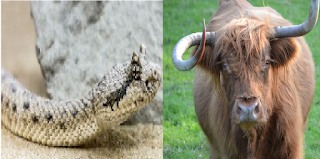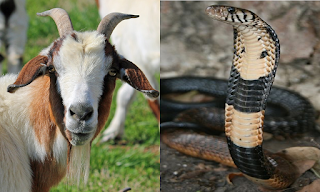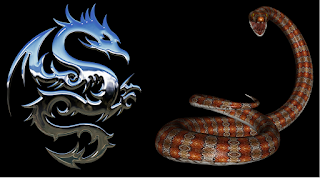Tarot and Tarotism
 |
Tarot and TarotismLicense Image: Public Domain |
It is said that the Tarot had its beginnings in the fourteenth century, and is believed to be first used for divination purposes in the eighteenth century, this period máncicos special cards for purposes created and use it took a lot of strength and power in that time; were further perfected over time such performance techniques, many of which are used today.
Composition of Tarot Cards
The traditional Tarot consists of 78 cards, including major arcana and minor arcana, bone underage biggest secrets and arcane secrets since the Latin word meaning mystery or secret.
Arcana of Tarot
- The Magician
- The High Priestess
- The Empress
- The Emperor
- The Hierophant
- Enamorado. In other texts it is handled as "The Lovers"
- The Chariot
- Justice
- The Hermit
- Wheel of Fortune
- The Force
- The Hanged Man
- Death (Listed unnamed)
- Temperance
- The Devil
- The House of God (The Tower)
- The Star
- The Moon
- The Sun
- The Trial
- The World
- Crazy (in some Tarot card is the 0 in others is 22 and in others it is not numbered)
Minor Arcana of Tarot
Composed of 56 divided into 4 groups or (Palos) are: Spades, hearts, clubs and coins, like the Spanish deck, but with slight variations: Ace Card numbered (1) to 10 characters adicionándoles Royal Court : Jack, Queen, King and Knight. Etteilla discovered an interesting fact about the number of cards you are 78, because he thinks it is the sum of the first 12 numbers as follows: (1 + 2 + 3 + 4 + 5 + 6 + 7 + 8 + 9 + 10 + 11 + 12) = 78
The design of the cards is changed, although there are classic designs such as the Tarot de Marseille (late seventeenth century) that has served as a guide in the preparation of the figures and their symbols. A popular deck is the Rider-Waite-Smith Tarot (Rider-Waite or Rider or just) devised in 1910 by Arthur Edward Waite and his disciple by Pamela Colman Smith, printed by the Rider Company. Another common deck is the Tarot Book of Thoth devised between 1938 and 1942 by the English magician Aleister Crowley and his disciple by Frieda Harris; this deck was meeting in 1944, in black and white, with The Book of Thoth explains the symbolism and use; but was released with its original colors only in 1977, in New York, by US Games Systems and Samuel Weiser.
Origins of Tarot
The first references to the Tarot published in the fifteenth century in Italy. The oldest is the Tarot deck of Filippo Maria Visconti (1412-1447), now in the Yale University Library, USA.
Italian historian Giordano Berti assumed that the Duke of Milan was the inventor of Tarot. In fact, some pictures of Filippo Maria Visconti Tarot are equal to those of other deck designed by Duke in 1415: Heroes Game XVI.
In studies by occultists of the XVIII and XIX, as Antoine Court de Gebelin, Eliphas Levi and Dr. Gérard Encausse (Papus) attempts to demonstrate the connection between the Tarot and Kabbalah, as well as with Egyptian symbolism.
According to current researchers Daniel Rodes and Sanchez embodies the origin of Tarot would be found among medieval Occitan Cathars and culture pose whose philosophy fits perfectly with the basic idea of the game of Tarot.
Thus, the presence of a Priestess, the importance of the female characters and clear references to Christianity than the Roman orthodoxy would think of an original use of the Tarot as a transfer of a philosophical knowledge, but with the passage of time would pass be used as a divination system. But the High Priestess was actually a symbol of the Christian faith, as evidenced by numerous works of art from the Middle Ages.
Other authors claim that Roma, in his travels through European countries, promoted the Tarot as a divination system. There are, in fact, argue that the Tarot survived the Inquisition, as Roma were not a priority objectives of the inquisitorial jurisdiction, by which they, their known esoteric practices and achieved personal escape persecution and fire and get to today. But it is true that Gypsies arrived in Europe when the Tarot was known. Moreover Tarot game is played in Italy since the fifteenth century and in the following century it spread in many regions of Europe: first France, then Switzerland, Belgium, Germany and Austria. Divination with Tarot appears safe in Italy and France in the eighteenth century.
Divination using tarot cards
Only in the late eighteenth and early nineteenth century Tarot cards were associated with mysticism and magic. The tradition began in 1781, when Antoine Court de Gébelin, a Swiss clergyman and Freemason, published "Le Monde Primitif" a speculative study on ancient religious symbolism and their remnants in the modern world. From Gébelin argued that the symbolism of the Tarot de Marseille represented the mysteries of Isis and Thoth. Gébelin later claimed that the name "Tarot" came from the Egyptian words "tar", which means "real" and "ro", which means "way", and that the Tarot therefore represented a "royal road" to the wisdom.
Gébelin argued these and similar views dogmatically; had no evidence to support their arguments. Furthermore, Gébelin wrote before Champollion had deciphered Egyptian hieroglyphs. Modern Egyptologists found nothing in the Egyptian language to substantiate Gébelin fanciful etymologies, but these findings came too late. When he set of authentic Egyptian texts, was firmly established identification of the Tarot cards with the "Book of Thoth" Egyptian occult practice.
Although Tarot cards were used for fortune telling in Bologna in the eighteenth century were originally published as a method of divination by Jean-Baptiste Alliette, also called "Etteilla", a French occultist who reversed the letters of his name and he worked as a fortune teller shortly before the French revolution. Etteilla designed the first esoteric Tarot deck, adding astrological attributions and motives "Egyptian" several cards, altering many of the Marseilles designs, and adding divinatory meanings in the text of the letters. Etteilla decks, although now eclipsed by Smith and Waite illustrated deck and "Thoth" by Aleister Crowley, is still available.
Later, Mademoiselle Marie-Anne Le Normand popularized divination and prophecy during the reign of Napoleon I. This was due in part to the influence it had on Joséphine de Beauharnais, Napoleon's first wife. However this is not commonly used Tarot .
The interest in the Tarot for divination by other occultists came later, during the height of the Hermetic, in the 1840s, in which (among others) Victor Hugo was involved. The idea of the cards as a mystical key was further developed by Eliphas Lévi and passed to the English-speaking world by the Hermetic Order of the Golden Dawn. Lévi, not Etteilla, is considered by some the true founder of most contemporary schools of Tarot ; his "Dogme et Ritual de la Haute Magie" of 1854 introduced an interpretation of the cards which related to the Kabbalah. While Levi accepted claims Court of Gébelin about an Egyptian origin of the symbols of the cards, rejected innovations Etteilla and his altered deck and arranged instead a system which related the Tarot , especially the Tarot of Marseille with the cabal and with the four elements of alchemy. On the other hand, some of Etteilla divinatory meanings are still used by some Tarot readers.
Present day of Tarot
The Tarot remains a means of divination used extensively in developed societies, usually in the form of personal consultations, telephone and internet where Tarot is syncretized with other beliefs and traditions as astrology or numerology. Only in Spain esotericism moves hundreds of millions of euros a year, and within the Tarot is the most visible and commercial element.
Guessing of Tarot
The Tarot reading is part of the belief that the cards can be used to understand current and future situations of the subject (or client). Some believe that the letters are guided by a spiritual force as a guide, while others believe the cards help them in entering into a collective unconscious. One of the most used methods are rolls; among the most popular is the circulation of the Celtic Cross.
Psychology of Tarot
Carl Jung was the first psychologist to attach importance to Tarot symbolism. He saw the Tarot cards as representing archetypes: fundamental types of persons or situations embedded in the subconscious of all human beings. The letter from the Emperor, for example, represents the figure of the patriarch or father.
The theory of archetypes gives rise to several psychological uses. Since the cards represent various types of people, you can have access to the ideas of self-perception of the subject, by asking for example, to select a card that he "identified". Equally, the subject can try to clarify the situation by imagining it in terms of archetypal ideas associated with each card. For example someone rushing eagerly as the Knight of Swords.
More recently Dr. Timothy Leary has suggested that Tarot cards are a pictorial representation of human development from infant to mature adult. Thus, the Fool, represent the newborn baby, the magician symbolize the stage where the child plays.
Tarot as a mnemonic device
Some schools of occult thought and study of symbols as the Hermetic Order of the Golden Dawn, consider the Tarot as a textbook and mnemonic device for their teachings. This may be because the arcane (or arcane) word is used to describe two sections of the Tarot deck: arcana is the plural form of the Latin word arcanum, meaning "closed" or "secret."
Elements of a generic Tarot
- A set of cards with meanings. Each card has an allocation of arbitrary meanings. They are related to the great universal archetypes (in this sense the meanings can be only allusions to allow flexibility in the interpretation). All the meanings of each card forms a rich interpretation (philosophical, situational) semantic universe.
- Charts illustration. Each card features a Tarot serves as an illustration rote reference, this is important to select icons and colors, and each color has a symbolic value (eg, blue-spirituality).
- Numerological interpretation. Linked to the number of cards, there is a tradition on the meaning of each number.
- Basic categories. The tradition divides the Tarot in spades (thought and intelligence), coarse (life and fire), Cups (love and feelings) and Pentacles (material nature)
- League tradition. Although this element is not forced, it is important for re-learning of other Tarots.
Astral Charter also known as Natal Chart
Horoscope, birth chart or natal chart: Planets
Horoscope or Birth Chart Etymological Origin
Horoscope, Birth Chart or Natal Letter: History
Horoscope, birth chart or natal chart: Planets
Horoscope or Birth Chart Etymological Origin
Horoscope, Birth Chart or Natal Letter: History










Comments
Post a Comment